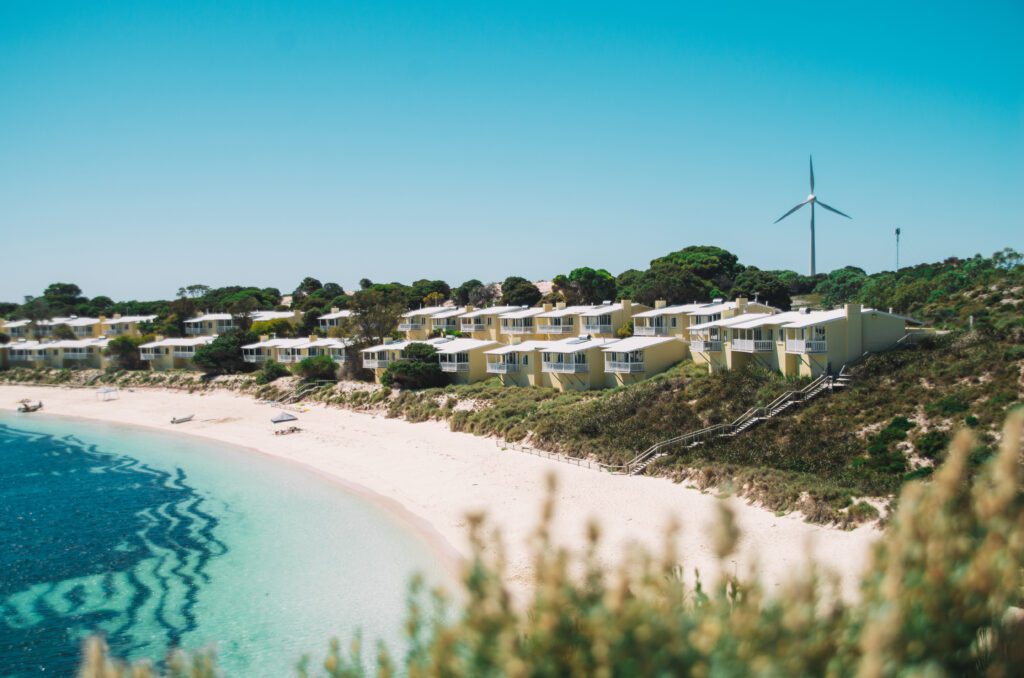By Alexandra Casey
Western Australia is a photographer’s paradise. Our endless coastlines are a versatile mix of tame and wild, with lush vegetation, rugged red dirt, squeaky white sand and glistening opal oceans.
The West is known for spectacular sunsets over the sea, diverse landscapes and exquisite native flora and fauna, elements that combine to create incredible photographs.
Here are 9 tips & tricks to capture the best shots in WA:
-
Harness the Light
Use light to your advantage. Lighting determines brightness, tone, mood and atmosphere. The manipulation of light allows the photographer to capture the best possible texture, contrast and colour in an image. It’s also helpful to make the most of natural light!
Think, photographs of the sun dipping into the ocean or a long exposure shot of the stars lighting up the night sky.

-
Rule of Thirds
The rule of thirds is a composition guideline to help create a more aesthetic shot. To do this, imagine that what you can see through the camera viewfinder is split into horizontal and vertical thirds. To create a more striking composition, place your subject on the left or right third of the image.
-
Framing
Framing is often used to draw the viewer’s attention to the main point of interest through the use of objects or colours. This photographic element can help tell a story, create context, evoke emotion or increase overall visual interest.
For example, you could use the branches of a tree to frame the Perth city skyline, or allow the arches of the Indiana Tea House to frame a photo of Cottesloe Beach.
-
Reflections
Reflections are powerful and mesmerising to look at, and a very clever tool to use when composing an image.
You can capture a National Park dotted with trees through the reflection in a stream, or the sparkling glimmer of the sun’s reflection on the sea.
-
Horizon
Always, always, always line up the horizon in an image. No exceptions. It makes a massive difference and improves the visual appeal. A wonky horizon doesn’t look “arty” or “creative,” but, rather unpleasant. This is especially vital when capturing landscapes. A tripod may also come in hand.
-
Balance
Balance is a very important component to consider when composing an image. It can be achieved through symmetrical or asymmetrical balance.
Balance is attained by organising the objects, tones and colours within the frame in terms of “visual weight”. Small or light-coloured objects are less in weight, while large and dark objects are heavier. To correctly balance an image, you want to achieve an “equal” visual weight.

-
Line
The element of line can evoke emotion and feeling in a photograph. Horizontal lines convey feelings of peace, tranquillity and stability. Whereas, vertical lines are known for portraying a sense of power and strength. Think, towering trees in a forest or a low camera angel of a tall city building.
Line can also be employed to guide the audience through an image, instructing them to feel or view the work in a specific way. For example, you could use the structure of the Busselton Jetty to lead the viewer’s eye through the photo.
-
Movement
Movement is not only engaging, but it helps to tell a story and set the mood. It can lead the viewer through the image or convey a feeling or emotion. Shutter speed is a great tool to capture movement.
Use a slow shutter speed to photograph the soft, ribbon-like texture of the ocean before sunrise or a fast shutter speed to freeze the action of a surfer riding a massive wave.

-
Depth
Depth is a handy photography trick and can be implemented with the use of colour, focus and perspective. Always ensure your images have a foreground, middle ground and background. And experiment with aperture to create shallow and deep depth of field.
For example, a close-up image of a kangaroo in a field would have a shallow depth of field (subject in focus, background out of focus), to draw attention to the main element of the photograph (the kangaroo).
Next time you find yourself behind the lens, be sure to use these easy tips!
If you’re looking to start testing your skills, head to our Travel WA page for new places to explore!
